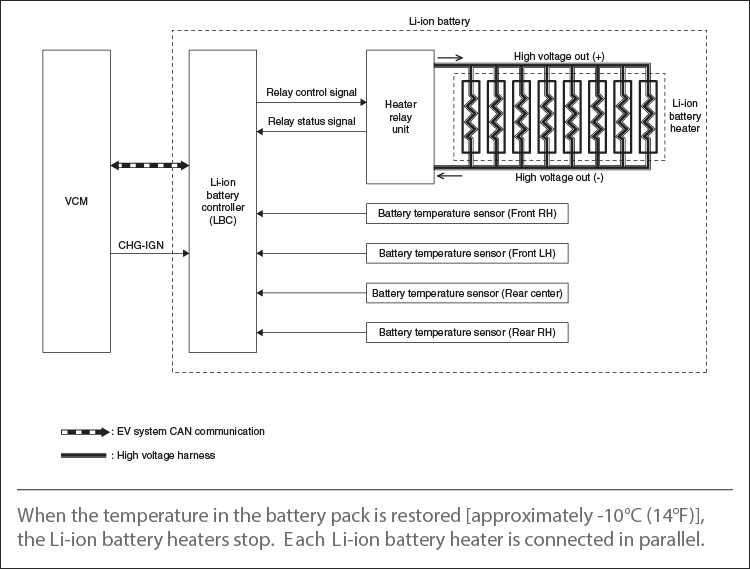I, too have some cold-weather questions:
- What are the safe discharge levels to leave my 2015 SV overnight at 0ºF? What is too low, what is too high?
- If I leave it plugged into my ClipperCreek 40A Level 2 charger on a timer overnight, will it heat the battery without charging?
- If not, should I leave it charging until it tops out, or is leaving it on a timer from 4AM - 6AM OK?
My basic question is what's the best protocol for prolonging my battery's life in the cold. Thanks!
If NOT connected to an EVSE, the battery must be above 30% SOC to use the heaters, otherwise it won't and then expect some freeze damage if the temperature gets down to -40F(-40C) or lower. If you are using an EVSE, leave it plugged in to avoid it using the battery instead of the EVSE power. The battery heaters kick in early so it has a head start on warming and to get the driver some range to work with. If the Leaf is below 30% SOC but the temperature never drops low enough to cause damage, your battery will be so cold, you would be driving around in turtle mode everywhere because the BMS would limit the "output" power of the battery to avoid cold damage. By your example of 0F, I would be plugging in to try and reach 100% SOC since you will know that the battery warmer is going to be leeching power the whole time in that tempeature. It depends on if you plan on using it that day or if you will be waiting days before use. Having it start at 100% SOC can give you days of "warming" power, but you still have to be mindful of that 30% limit where the battery heaters will no longer activate. So there really isn't so much a too low temperature, but there is certainly a too high temperature, but that's more in the "warm" weather range than temperatures get above 70F.
The battery warmer works "independent" of the rest of the Leaf and is powered by the internal 360V battery, so having it plugged in or not, it will run to keep the battery warm. Just have to remember it's a background power leech, so when the Leaf decides to "charge", it has to make up for that extra missing power it was using, making it have longer charge times and added energy usage that you can see on the EVSE that records those kind of things for the owner.
The battery will take care of itself, but charging creates additional waste heat, which is a benefit in cold weather, thus the battery warmer may not be used as much or if at all. The battery warmer serves two functions, keep the battery warm enough to be driveable and to protect the battery. If the battery warmer did not exist but the temperature never got close enough to damage the battery, you would still have an issue of power. Say the battery was allowed to drop to -20F because of no heater. It woldn't damage the battery, but the safe power draw would be so low as to be not usable to drive with if the battery can only put out 1,000 watts for example. That's basically like trying to drive around in "creep" mode everywhere, lol.

You would have to warm it up to be about to pull more power safely, so it works both ways. The battery needs to warm enough to both output power and take in power from charging.

